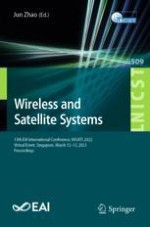2023 | Buch
Wireless and Satellite Systems
13th EAI International Conference, WiSATS 2022, Virtual Event, Singapore, March 12-13, 2023, Proceedings
herausgegeben von: Jun Zhao
Verlag: Springer Nature Switzerland
Buchreihe : Lecture Notes of the Institute for Computer Sciences, Social Informatics and Telecommunications Engineering
